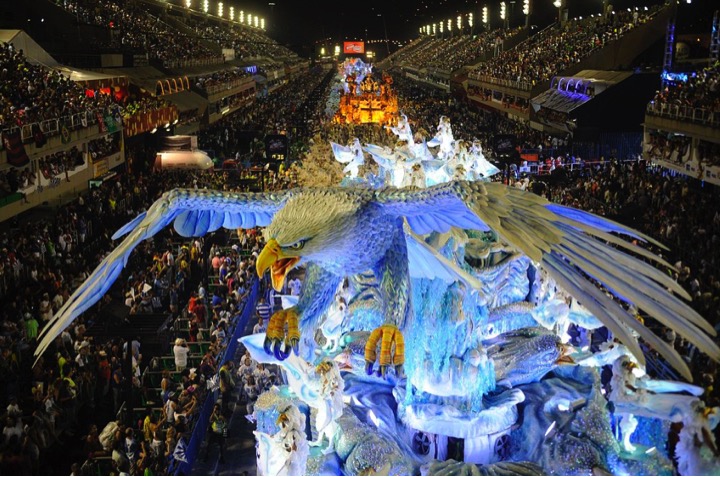
India is a mystical land, a large country in South Asia, and the second largest in the world in terms of its population. The country is bordered by the wonderful Himalayas on one side and covered by three oceans on three sides, namely, the Arabian Sea, Indian Ocean, and the Bay of Bengal. It has the most diverse terrain with its rich and varied heritage.
Right from snow-clad mountains on one side to vast coastline, the landscapes of India are commune with nature.
The history of India dates back to over 5 millennia. Many dynasties and civilizations have lived in this mighty land. The Indian architecture portrays the influence of the invaders at different ages.
A complete trip that includes all attractions is not possible, as the country is vast and there are distinct facets for each. The following places are just a tip of the ice berg to get you a feel of its glamorous history.
Taj Mahal
Taj Mahal is one among the wonders of the world. It was built by the Mughal Emperor Shah Jahan in the memory of his late wife Mumtaz Mahal and it houses her tomb. Located on the banks of the Yamuna River, it fabulously depicts the artistry of the Mughal architecture.
The mausoleum complex took around 20 years to build. Adorned with ivory-white marble and being persistently preserved, the iconic monument stands out as the symbol of love.
Gometeshwara
The Gometeswara statue is a 57-foot monolithic statue situated in Shravanbelagola, Karnataka. This is dedicated to God Bahubali of Jain religion and was built around 983 A.D. The emblematic idol depicts the prolonged meditation of Bahubali. An event called “mahamastakabhisheka” is performed every 12 years and while it is held, the figurine is anointed with milk, saffron, and ghee. Devotees throng this place from all over the world during the event.
Harmandir Sahib
This is popularly known as the Golden Temple. It is an important Sikh Gurdwara (temple) located in Amristar, Punjab. It was built by Guru Arjan, the fifth guru of the Sikhs around 1589.
Spanned by a manmade pool, the temple was continuously modified and revamped due to the invasions by Mughals. It is worth noting that Maharaja Ranjit Singh rebuilt it with copper and marble and the center sanctum was covered with golden foil, and thus the name Golden temple.
Hampi
Hampi is a village in the state of Karnataka situated amidst the ruins of the Vijayanagar kingdom. This is a UNESCO world heritage site having numerous remains of old temples. The beautiful architecture of these temples highlights the glorious era of the Vijayanagar kingdom. This is a must visit site for the explorers of historic sites.
Konark Sun Temple
This temple is dedicated to the Sun God and is situated in Konark, Odisha. It was built by King Narasimhadeva I in the middle of the 13th century. The shape of the temple is a big chariot with 12 pairs of wheels, walls, and pillars pulled by seven horses, all made of stones.
Nalanda University
This university is one of the oldest universities for higher studies in the world, which dates back to the 5th century BC. The remains of this historic university are located near Patna in Bihar. It was once a popular village and a trade route. It is said that students from countries like China, Tibet, and Persia came to this center for learning. It is believed that Gautama Buddha has also delivered few lectures here.
Khajuraho
These majestic sculptures have been embellished by three groups of regimes, the Chandelas, the Sultans, and the Khajurahos. Located at a distance of 175 km from Jhansi, the Khajuraho temple is a mix of Hinduism and Jainism artistic works. First, it was constructed by the Chandeles with the religious tolerance, later invaded by the Sultanates in the 13th century, and finally, the erotic carvings of Khajuraho were made. These stunning temples of Khajuraho are a great attraction for tourists.
There are many such wonders in India, of which the abovementioned seven have been included in the UNESCO world heritage list. It is really awe-inspiring to explore them and discover the fascinating history of these sites.

 After the Rinjani, we return to Bali one last time a few days in advance before flying to Australia.
After the Rinjani, we return to Bali one last time a few days in advance before flying to Australia. Back to India! First goal: Varanasi, formerly called Benares.
Back to India! First goal: Varanasi, formerly called Benares. It is here in New Delhi that I take India for the first time in the face. Sylvain was in Bombay. Because arriving in India is not trivial. We remember his first time in India.
It is here in New Delhi that I take India for the first time in the face. Sylvain was in Bombay. Because arriving in India is not trivial. We remember his first time in India. We are in Ecuador. The only bus leaving here today is only two hours away. So we wait at the border post by talking with the customs, who do not ask for more. There is no crowd here. Nobody else crosses the border during our two hours of waiting. Andrea and Tania take out the mull pot and rotate it. Customs officers are intrigues. They did not know, but they appreciate.
We are in Ecuador. The only bus leaving here today is only two hours away. So we wait at the border post by talking with the customs, who do not ask for more. There is no crowd here. Nobody else crosses the border during our two hours of waiting. Andrea and Tania take out the mull pot and rotate it. Customs officers are intrigues. They did not know, but they appreciate. A beautiful street of Cuenca
A beautiful street of Cuenca Banos, a seaside resort in nature
Banos, a seaside resort in nature


 When you are reading the news, you will notice that there are many problems in South Africa. From the violence to political problems. This makes it hard to decide if this is a country that people want to visit. Especially, with a great place like Cape Town. With this information, you will know for sure if you can plan a trip to South Africa, or if you should rather consider another country.
When you are reading the news, you will notice that there are many problems in South Africa. From the violence to political problems. This makes it hard to decide if this is a country that people want to visit. Especially, with a great place like Cape Town. With this information, you will know for sure if you can plan a trip to South Africa, or if you should rather consider another country.